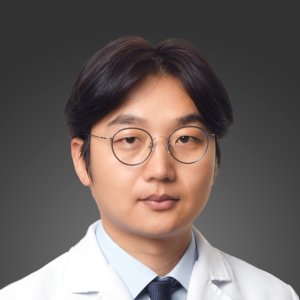
Research Assistant Professor
PhD(UW), MS(THU), BE(NUAA)
Academic Appointments
- Research Assistant Professor, Department of Ophthalmology and Visual Sciences, CUHK
Biography
Dr He earned a Ph.D. in Bioengineering from the University of Washington in 2022 and worked there as a postdoctoral scholar afterward. Prior to that, he graduated with an M.S. in Physics from Tsinghua University and a B.E. from Nanjing University of Aeronautics and Astronautics. His current focus is on developing biomedical imaging and sensing technologies for low-cost, smart, mobile, and digital health monitoring. Dr He has published over 30 journal papers on this topic, with 17 as the first author, which have been cited over 500 times (H-index: 12, i10-index: 15). His research has been reported by over 20 media outlets, including Voice of America, Daily Mail, and Physics World. He has received numerous awards, including the National Graduate Scholarship and Academic Rising Award at Tsinghua University. He serves on the reviewer group of over 20 journals, such as Optica, Optics Letters, Biomedical Optics Express, and Optics and Lasers in Engineering.
Research Areas
Developing mobile and smart diagnostic technologies, particularly in biomedical imaging and sensing, to innovate in creating devices and methods for addressing clinical diagnostic needs, with a special interest in detecting ocular conditions and disease biomarkers.
Research Programmes
- Trans-angiosomes imaging photoplethysmography for detection of choroidal thinning from facial videos
- Augmented smartphone bilirubinometer enabled by a mobile app that turns smartphone into multispectral sclera imager
- Smartphone-enabled multispectral imaging photoplethysmography for monitoring hemodynamics
- Handheld swept-source optical coherence tomography for monitoring pediatric retinopathy
Representative Publications:
- He, W. Li, Y. Shi, Y. Yu, W. Geng, Z. Sun, and R.K. Wang, “SpeCamX: mobile app that turns unmodified smartphones into multispectral imagers,” Biomed. Opt. Express 14, 4929-4946 (2023).
- He, W. Geng, W. Li, and R.K. Wang, “Non-contact measurement of neck pulses achieved by imaging micro-motions in the neck skin,” Biomed. Opt. Express 14, 4507-4519 (2023).
- He, and R. K. Wang, “Imaging-photoplethysmography-guided optical microangiography,” Optics Letters, 47, 2302-2305 (2022).
- He, Z. Sun, Y. Li, W. Wang, and R. K. Wang, “Smartphone-enabled snapshot multispectral autofluorescence imaging and its application for bacteria assessments in skin and oral cavity,” Optics and Lasers in Engineering 140, 106546 (2021).
- He, Z. Sun, Y. Li, W. Wang, and R. K. Wang, “Spatiotemporal monitoring of changes in oxy/deoxy-hemoglobin concentration and blood pulsation on human skin using smartphone-enabled remote multispectral photoplethysmography,” Biomed. Opt. Express 12, 2919-2937 (2021).
- He, T. Liu, and R. K. Wang, “Handheld swept-source optical coherence tomography guided by smartphone-enabled wide-field autofluorescence photography for imaging facial sebaceous glands,” Optics Letters 45, 5704-5707 (2020).
- He, T. Liu, and R. K. Wang, “Enhanced spatial resolution for snapshot hyperspectral imaging of blood perfusion and melanin information within human tissue,” Journal of biophotonics 13, e202000019 (2020).
- He and R. Wang, “Hyperspectral imaging enabled by an unmodified smartphone for analyzing skin morphological features and monitoring hemodynamics,” Biomed. Opt. Express 11, 895-910 (2020).
- He and R. K. Wang, “Analysis of skin morphological features and real-time monitoring using snapshot hyperspectral imaging,” Biomed. Opt. Express 10, 5625-5638 (2019).
- He, X. Chen, Y. He, T. Guan, G. Feng, B. Lu, B. Wang, X. Zhou, L. Hu, and D. Cao, “Spectral-optical-tweezer-assisted fluorescence multiplexing system for QDs-encoded bead-array bioassay,” Biosensors and Bioelectronics 129, 107-117 (2019).
- He, T. Guan, Y. He, B. Lu, D. Li, X. Chen, G. Feng, S. Liu, Y. Ji, and M. Xin, “Digital encoding based molecular imprinting suspension array for multiplexed label-free sensing of phenol derivatives,” Sensors and Actuators B: Chemical 271, 367-373 (2018).
- He, D. Li, Y. He, T. Guan, Y. Zhang, Z. Shen, X. Chen, S. Liu, B. Lu, and Y. Ji, “Optical demodulation system for digitally encoded suspension array in fluoroimmunoassay,” Journal of biomedical optics 22, 097003 (2017).
- H. He, D. M. Li, Y. H. He, Y. L. Zhang, Z. Y. Shen, L. Zhu, X. J. Chen, S. Y. Liu, and F. Y. Chen, “Microbeads preparation with reversed-phase microemulsion and ultraviolet light curing for digital encoding suspension array,” RSC advances 7, 32727-32730 (2017).
- He, Y. Liu, Y. He, L. Zhu, Y. Zhang, and Z. Shen, “Digital barcodes of suspension array using laser induced breakdown spectroscopy,” Scientific reports 6, 1-11 (2016).
- Sun*, Q. He*, Y. Li, W. Wang, and R. K. Wang, “Robust non-contact peripheral oxygenation saturation measurement using smartphone-enabled imaging photoplethysmography,” Biomed. Opt. Express 12, 1746-1760 (2021).
- Feng*, Q. He*, W. Xie, Y. He, X. Chen, B. Wang, B. Lu, and T. Guan, “Dual-spectra encoded suspension array using reversed-phase microemulsion UV curing and electrostatic self-assembling,” RSC advances 8, 21272-21279 (2018).
